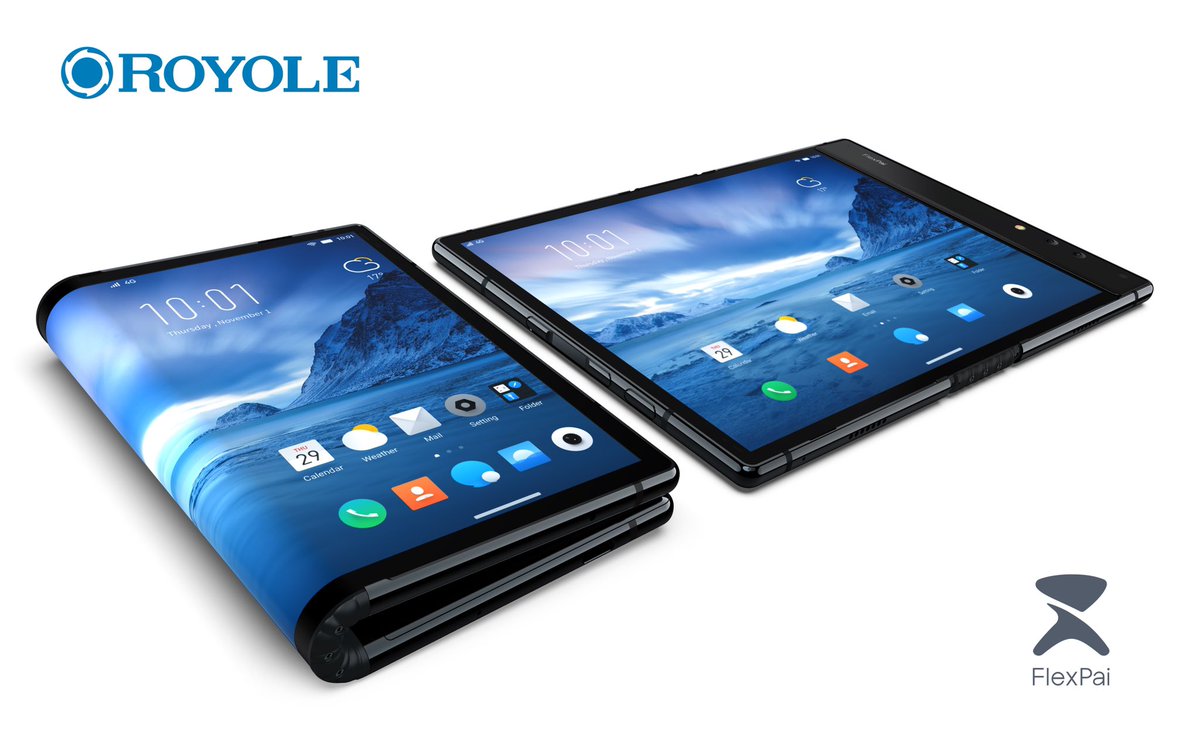Foldable phones are pretty cool, they're still convertibles
5 min. read
Published on
Read our disclosure page to find out how can you help MSPoweruser sustain the editorial team Read more

First phones were small. Then big and wide. Then thin and tall. Then they were notched. From next year, they will bend and flex into all sorts of shapes and sizes. Flexible displays are a new technology to enable a new form factor of foldable phones. FlexPai introduced the first working prototype, Microsoft has been rumoured to be working on the flexible Andromeda for years, and now Samsung and Google have jumped on the trend. Google is working on making Android more flexible so that it can adapt to phones switching between modes. The firm has already done much of the legwork with ChromeOS and Android apps now being used to display at arbitrary window sizes and placements. Samsung for its part is working on hardware, currently, being known as the Samsung Galaxy Flex. It will likely be the first mainstream foldable phone, and it will be the first test of the technology ‘in real life.’
Foldables phones as a concept are an exciting conceptual technology. In theory, people can use their smartphones like tablets, or use their tablets as smartphones, or fold their large smartphones into more compact phones so they could be stowed away more easily in a purse. As a concept, they are undeniably cool. But technology has to be more than very cool. It also has to be useful and practical.
At their core, foldable phones are just another multi-modal device. In other words, they are convertibles. On the one hand, we have convertible PCs like the Surface Pro, on the other hand, we’ve had a spate of convertible phones like the Lumia 950 XL and Samsung Galaxy phones with Dex enabled.
Let’s talk about convertible PCs. Convertibles are the closest thing to Foldables that we have right now. They exist as laptops or tablets half the time. The other half, they can be flipped or detached to become tablets. Microsoft, Apple and Google all offer convertibles in some form or the other. The Surface Pro 3 can be credited with legitimising the category, so can Apple’s iPad Pro to a much lesser degree. Convertible devices, while remaining the only growing segment of PCs, are still relatively niche. They have been around for a long time, but they haven’t exactly set the market ablaze. “The ramp of convertibles and detachables has been more crawl than run,” admitted Linn Huang, research director Devices & Displays at IDC, earlier this year.
For multi-modal phones, while not the same as foldables or convertibles, the conceptual idea is the same. You have a phone — a device you carry with you at all times — and you’re going to use it to replace another bigger screened display. Microsoft had this with Continuum on Windows 10 Mobile, Samsung had this with Dex. These haven’t taken off as much as phone manufacturers would have liked. There are no numbers, but I don’t see anyone clamouring for dex or continuum support save the occasional journalist giving it a test run. Perhaps the reason for this is something I would think of as goal compatibility. Whether using a tablet and a laptop, a user often has a similar goal. They want a large screen portable devices that can handle productivity and entertainment tasks. For phone, they want a small screened portable device that is a messaging, entertainment and camera powerhouse, with potential for productivity (think typing long documents or making powerpoints) in a pinch. Aside from that, for many people, a phone is their primary computing device while a tablet or even a laptop is strictly optional.
No matter how you look at it, a tablet which doubles as a phone is a companion device masquerading in the skin of a primary device.
“When it’s open, it’s a tablet offering a big-screen experience. When closed, it’s a phone that fits neatly inside your pocket,” said Justin Denison, Samsung’s SVP to Wired magazine (which goes more in-depth into how much of a technical achievement foldable phones are).
It is pretty cool that you can stretch your phone into a tablet, but do users will necessarily want the form factor compromise that convertibles will inherently have? Physics mandates increased thickness and weight as a starter. Battery life will probably be an issue too – at least for the first generation.
That being said, it is possible that we’re approaching this from the wrong angle entirely. Foldable devices don’t need to replace phones or tablets in a one-one sense. Maybe they can be another class of device that side steps our conventional ideas of what portable, pocketable computing is. Perhaps its even wrong to even think in those boxes. Maybe with the launch of foldables, new use cases will unveil themselves. Perhaps that’s far too many perhapses and maybes when it comes to devices that will set you back over a grand.
The point of this is not to crap all over the idea of foldable phones. Often, just because a technology is new and cool, we worth considering that foldables may never actually take off on mobile. Much like other niche technologies, like floating or 3D touch, 3D TVs, Google Glass etc., the technology behind it may go on to power new kinds of gadgets. Till then, the concept of a foldable remains pretty cool. Let’s see if it survives a collision with reality.









User forum
0 messages